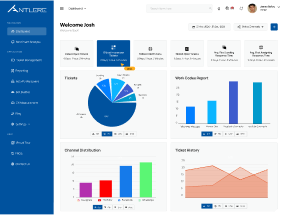Call Center quality assurance is the process of meeting and maintaining software quality objectives. Because customer expectations are increasing, exceptional support is essential for business success. In our Call Center Quality Assurance (QA) team, they are an instrumental role in guaranteeing consistently high quality interactions. A robust QA system implies that companies can monitor performance, work on increasing agent efficiency as well as preserving customers. Through QA, call centers can determine what their strengths and areas that needs improvement are and in turn adapt to customer needs, ensuring that they stay competitive in a fast moving market.
What is QA in the context of a call center? And how are businesses using call center quality assurance to increase performance?
In this blog, we will talk about Call Center Quality assurance technical and strategic aspects, the definition and what are the key components and best practices, and Call center quality management software and how it can assist organizations in providing great customer experience.
What Does QA Stand for in Call Centers?
- Quality Assurance, or QA, is a continual process of ensuring that the quality of customer interactions with your company lives up to its standard. QA aims to guarantee that every interaction (calls, emails or chats) is consistently of a predefined quality to fit a certain business customer experience criteria.
In the context of call centers, QA focuses on several critical aspects, including:
- Agent performance: Measuring how good agent are at managing customer inquiries, solving problems and ensuring a good experience.
- Compliance: Taking care that agents adhere to the company policies, rules for the industry, and legislation during communicating.
- Customer satisfaction: How satisfied customers are with the service they got, and to look for the areas to improve.
Quality assurance in the call center can be used across many channels such as voice calls, emails and live chat hence contact center quality management is very important.
Key Components of Call Center Quality Assurance
Some of the things that fall within the umbrella of call center quality assurance are necessary to provide top notch, high quality customer service. To optimize QA processes, businesses must focus on several critical components:

1- Call Center Monitoring
Call center monitoring includes listening to and reviewing live and recorded calls made between agents and customers. All this is done so that quality assurance teams can see how agents are responding to inquiries, solving problems, and keeping track of good interaction.
Call center call monitoring can be done in several ways:
- Real-time monitoring: On ongoing calls, supervisors will be able to listen in and provide immediate support if the agent will be unable to assist the customer.
- Post-call evaluations: Once the calls are finished, calls can be recorded and then listened to against the call script, tone, and problem-solving skills.
The immediate feedback and support for agents can be provided by real-time call monitoring, however, post-call evaluations will enable more in-depth analysis and long-term performance tracking.
2- Call Center Quality Monitoring
Call center quality monitoring involves assessing the overall quality of the interactions between agents and customers. It’s not just about evaluating individual agent performance but also about analyzing customer sentiment and satisfaction.
Common elements reviewed during call center quality monitoring include:
- Tone and professionalism: Agents are required to be friendly, helpful and professional tone when making the call.
- Resolution effectiveness: There were problems with resolving the customer’s issue and determining whether this issue had been resolved successfully by the agent.
- Adherence to scripts: Determining whether agents do follow process and procedures for taking certain calls as per the company procedures and protocols.
- Customer satisfaction: Measuring customer happiness through surveys, feedback forms, sentiment analysis, etc.
Call center quality monitoring is more than just listening to calls, it can help you address recurring issues or train your agents.
3- Call Center Email Quality Monitoring
Although voice calls are the traditional customer service, email communication is also a popular workload in a call center system. With call center email quality monitoring, agents can be sure that written communication is answering the customer’s question clearly, professionally, and helpfully.
Key considerations in email quality monitoring include:
- Clarity and tone: How emails are easy to understand, and how the tone matches what the company is about.
- Response time: Testing how quickly agents reply to emails to meet the time expectations set by customers.
- Personalization: There’s so much now that you can check whether the emails are personalized or not — with the response tailored to the customer needs rather than generic responses.
However, email can be a very different set of challenges to voice calls, so to really address it there needs to be a different set of monitoring in place similar to that for voice, to make sure that this type of interaction is up to the same high standard.
4- Use of Call Center Quality Assurance Software
To effectively track and manage call center performance, many organizations use specialized call center quality assurance software. This software helps streamline the QA process, automate evaluations, and provide valuable insights into agent performance. Some common features of call center quality assurance software include:
Call recording: Recording calls for future analysis.
Automated scoring: Score agents based on a predefined set of evaluation criteria, e. g. tone, professionalism, problem-solving, etc. in an automated manner.
Sentiment analysis: AI analyzes customer sentiment in interactions and if the customer is satisfied, frustrated, or neutral.
Reporting and analytics: Reporting tools are so comprehensive that supervisors and managers are able to clearly see call quality trends and agent performance.
With the use of this service, businesses can ensure they remain agile for scaling their quality assurance efforts while keeping high standards in all their interactions.

Contact Center Quality Management: Integration with QA
In the broader context of contact center quality management, QA is just one piece of the puzzle. Contact center quality management involves a comprehensive approach to monitoring and improving all aspects of the customer service process. It includes:
Training: To make sure agents are able to handle calling on products, and services, and have the customer service skills required to help customers reach the right information.
Process improvement: Evaluated and improved continuously contact center processes for efficiency and service quality.
Performance metrics: Looking at key performance indicators (KPIs) like First Call Resolution (FCR), Average Handling Time (AHT), and Customer Satisfaction (CSAT) for overall contact center performance.
When integrated with a robust contact center quality management software solution, QA helps contact centers to continuously refine their operations and provide better service.
Best Practices for Call Center Quality Assurance
To optimize call center quality assurance processes and maximize their impact on customer satisfaction, businesses should adhere to the following best practices:

1- Define Clear Standards and KPIs
Setting clear and measurable quality standards that agree with the company’s target customer service goals is very important. These standards should include:
Agent behavior: EtC tone, professionalism, empathy etc.
Issue resolution: The ways how well agents solve customer problems.
Customer feedback: CSAT or NPS can then be used to measure your customer satisfaction.
These standards define a consistent approach to quality assurance and make it possible to more accurately evaluate performance.
2- Regularly Review and Update Call Center QA Processes
Because call center operations and customer expectations are ever evolving, it is important to periodically gauge and adjust your call center quality assurance processes. It makes sure that your monitoring systems are relevant and meet changing business needs.
3- Provide Continuous Agent Feedback and Training
Feedback is critical and should be regular. Feedback, in other words positive or constructive, therefore helps agents realize where they are good and where they are not. With regular training and feedback from call center monitoring, agents will always be well equipped to manage customer inquiries.
4- Leverage Technology for Automation
The AI tools and automated call center quality assurance software assist businesses to make the QA process more efficient. If it doesn’t, automation can speed evaluations up, reduce human error and yield greater consistency in insights about agent performance.
5- Engage Customers with Surveys and Feedback
It is a critical element of quality assurance that customers are satisfied. Surveys, feedback forms, and sentiment analysis are tools through which you can learn about your customer’s perception and suggest areas for improvement.
Conclusion
Quality assurance in a call center is something you can’t live without since it is your guarantee that your clients receive a high level of service at all times. Businesses need a well-rounded QA strategy, regardless of call center monitoring, call center quality monitoring, or email quality monitoring. If your organization invests in call center quality management, it stays ahead of the customer expectation curve and enables your long-term success by following the best practices and constantly improving your QA processes.
Abacus Outsourcing call center quality assurance solutions give your call center operations the boost that they deserve by giving you the tools to monitor, measure, and improve performance at every customer touchpoint. Your business can create unforgettable customer experiences that translate into continued loyalty and growth when you use the right technology, properly trained staff, and a customer-centric approach at the same time.
Consider implementing advanced call center quality assurance solutions that provide the tools needed to monitor, measure, and improve performance across all customer touchpoints.










